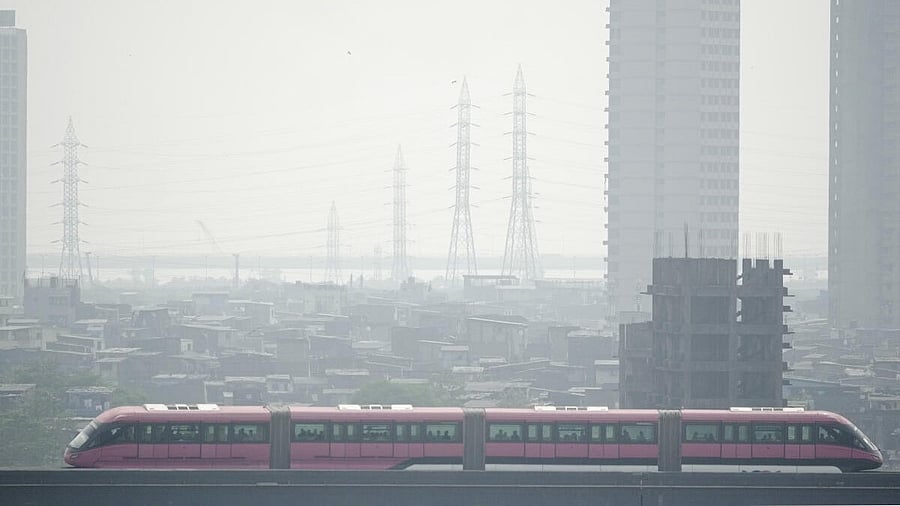
Pollution in Mumbai
Credit: PTI photo
Mumbai: Between February and April this year, the financial capital of Mumbai experienced PM10 levels above the National Ambient Air Quality Standards (NAAQS) on 49 out of 89 monitored days—equating to 55 per cent of the total period, as per the data by the Central Pollution Control Board (CPCB).
The data, which has been analysed by the Centre for Research on Energy and Clean Air (CREA), suggests that monthly average PM10 levels remained consistently high in February and March, with only a slight improvement in April.
PM10 refers to Particulate Matter that is 10 micrometres or smaller in diameter—about 1/7th the width of a human hair. These tiny particles are small enough to be inhaled and can settle in the lungs, causing respiratory and cardiovascular problems.
As per air quality experts, common sources of PM10 include construction dust, road dust, vehicle emissions, industrial activity, and burning of waste. PM10 particles can also irritate the eyes, throat, and nose and are especially harmful to children, senior citizens, and people with asthma or lung conditions.
According to the data analysed- in February, all the 28 monitored days were above the standard.
In March, 17 out of 31 days recorded average PM10 levels above the safe limit. In April, 4 out of 30 days breached the standards. This highlighted ongoing concerns about deteriorating air quality across the entire three-month period.
In Mumbai the air quality data is recorded by 30 Continuous Ambient Air Quality Monitoring Stations (CAAQMS). The monthly average PM 10 levels for February, March and April were 130 micrograms per cubic metre (µg/m³), 108 micrograms per cubic metre (µg/m³) and 78 micrograms per cubic metre (µg/m³) respectively.
The CPCB has set a permissible limit for PM10—particulate matter with a diameter of 10 microns—at 100 micrograms per cubic metre (µg/m³) for a 24-hour average, while for PM2.5 particles (diameter of 2.5 microns or less), the 24-hour permissible limit is 60 µg/m³. However PM2.5 levels remained within national limits during the monitoring period.
“Every pollution hotspot in Mumbai has a unique fingerprint. Real-time source
apportionment, in addition to the proposed air quality warning and integrated decision support system for emissions (AIRWISE) system for Mumbai, is crucial to identify what’s causing the problem, whether it’s traffic, industry, construction, or waste burning.
Alongside this, capacity building is essential to ensure that targeted actions are implemented effectively on the ground, with clear accountability and follow-through,” said Manoj Kumar, Analyst, CREA.
Bhagwan Kesbhat, Founder of Waatavaran and member of Mumbai Clean Air Network said, “Deteriorating air quality in Mumbai has become a growing concern for all. While PM2.5 poses serious health risks, the consistently high levels of PM10 at several locations cannot be overlooked and needs urgent attention as it also impacts respiratory health. The BMC has taken steps to manage construction dust, but much more needs to be done on the ground to ensure cleaner air for citizens this winter.”